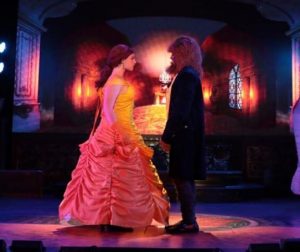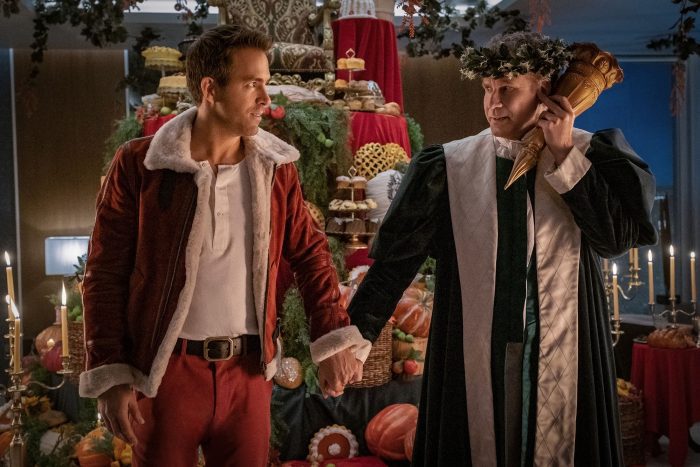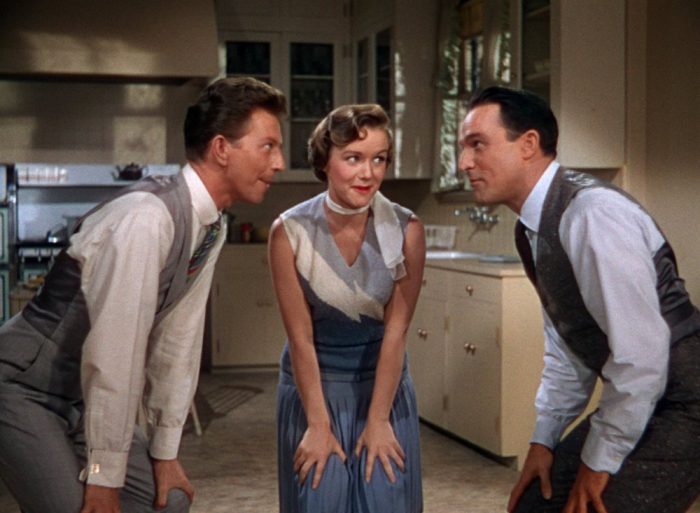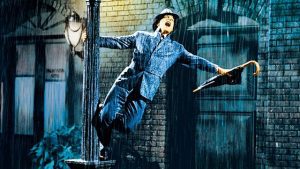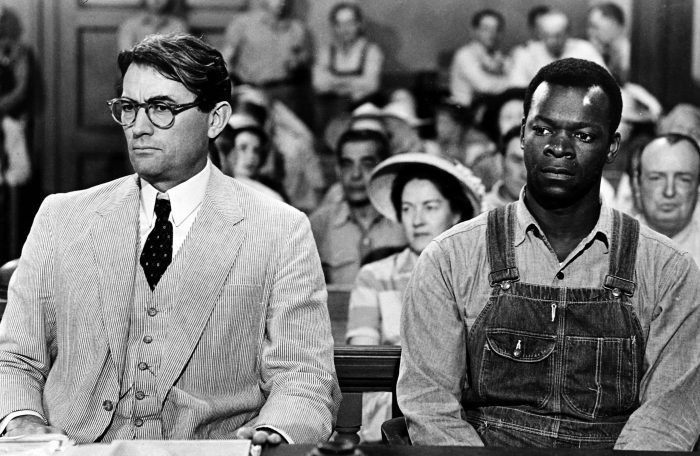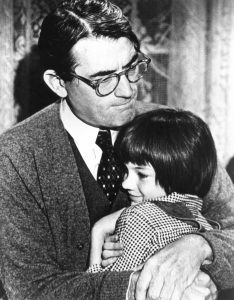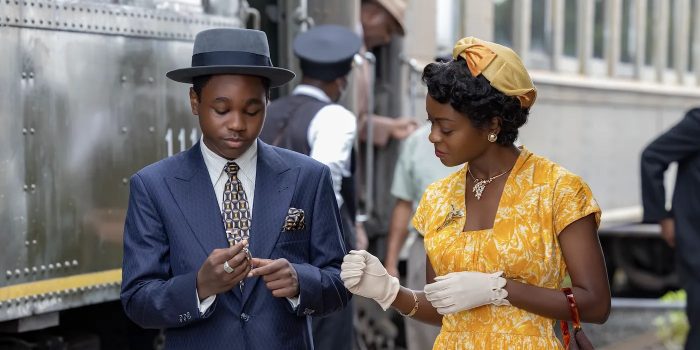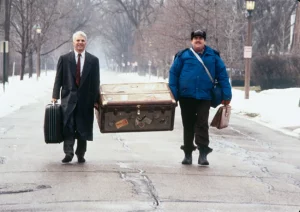To kick off the new year, Huntington’s Cinema Arts Centre will begin screening an assortment of hit films from the 1980s and 90s. This selection of films will include something for everyone, including beloved family friendly classics, offbeat comedies, action adventures, and obscure cult classics.
At a time when cinema attendance is down across the country, the Cinema Arts Centre wants to remind people why coming to the movies is so special — by playing audience favorites that are rarely seen in theaters.
The Cinema will host screenings of films that include The Addams Family (1991), The Mummy (1999) starring Brendan Fraser, Teenage Mutant Ninja Turtles (1990), The Goonies (1985) Happy Gilmore (1996), the Coen Brothers’ Raising Arizona (1987) Slumber Party Massacre II (1987), Darren Aronofsky’s Pi (1998), Little Giants (1994) starring Rick Moranis, The NeverEnding Story (1984), and Roald Dahl’s Matilda (1996), The Witches (1990), & James and the Giant Peach (1996).
This selection of films represents some of the favorite guilty pleasures of staff and supporters of the Cinema Arts Centre, and films that audiences feel a great sense of nostalgia for. Many of these films were programed after being suggested by local film lovers. The Cinema encourages the Huntington community to reach out to share films that they want to see. Suggestions should be sent to [email protected].
Upcoming Programs:
The Addams Family (1991)
Sunday, January 1st at 12:00 PM
$12 Public | $7 Members | $5 Kids
Tickets: https://bit.ly/AddamsFamilyCAC
When a man (Christopher Lloyd) claiming to be Fester, the missing brother of Gomez Addams (Raul Julia), arrives at the Addams’ home, the family is thrilled. However, Morticia (Anjelica Huston) begins to suspect the man is a fraud, since he cannot recall details of Fester’s life. With the help of lawyer Tully Alford (Dan Hedaya), Fester manages to get the Addams clan evicted from their home. Gomez realizes the two men are conspiring to swindle the Addams fortune and that he must challenge Fester. (US, 1991, 99min., English, PG-13 | Dir. Barry Sonnenfeld)
The Mummy (1999)
Friday, January 6th at 9:30 PM
$15 Public | $10 Members
Tickets: https://bit.ly/TheMummyCAC
Brendan Fraser and Rachel Weisz star in the cult classic that set the standard for the action-adventure genre, 1999’s The Mummy. Adapted from Karl Freund’s 1932 film of the same name, the story follows adventurer Rick O’Connell (Fraser), who discovers the hidden ruins of Hamunaptra. Returning with an archaeological expedition, the mummy of High Priest Imhotep wakes after 3,000 years and begins to wreak havoc as he searches for the reincarnation of his long-lost love. (US, 1999, 125min., English, PG-13 | Dir. Stephen Sommers)
Teenage Mutant Ninja Turtles (1990)
Sunday, January 8th at 12:00 PM
$12 Public | $7 Members | $5 Kids
Tickets: https://bit.ly/TMNTcac
In New York, mysterious radioactive ooze has mutated four sewer turtles into talking, upright-walking, crime-fighting ninjas. The intrepid heroes – Michelangelo (Robbie Rist), Donatello (Corey Feldman), Raphael (Josh Pais) and Leonardo (Brian Tochi) – are trained in the Ninjutsu arts by their rat sensei, Splinter. When a villainous rogue ninja, who is a former pupil of Splinter, arrives and spreads lawlessness throughout the city, it’s up to the plucky turtles to stop him. (Hong Kong/US, 1990, 93min., English, PG | Dir. Steve Barron)
Happy Gilmore (1996)
Cult Café
Saturday, January 14th at 10:00 PM
$7 Public | $5 Members
Tickets: https://bit.ly/HappyGilmoreCAC
All Happy Gilmore (Adam Sandler) has ever wanted is to be a professional hockey player. But he soon discovers he may actually have a talent for playing an entirely different sport: golf. When his grandmother (Frances Bay) learns she is about to lose her home, Happy joins a golf tournament to try and win enough money to buy it for her. With his powerful driving skills and foulmouthed attitude, Happy becomes an unlikely golf hero – much to the chagrin of the well-mannered golf professionals. (USA, 1996, 92 min, PG-13| Dir. Dennis Dugan)
Slumber Party Massacre 2 (1987)
With post-Film discussion with Costume Designer Jolene Marie Richardson and Fashion Historian Marcus Slabine
Thursday, January 19th at 7:30 PM
$17 Public | $12 Members
Tickets: https://bit.ly/SlumberParty2CAC
An all-female hard rock band rents a condo for a much-needed vacation. Their tranquility is cut short by a heavy metal dream-demon and his murder weapon of choice: the drill-tar.Written and directed by Deborah Brock (Rock ’N’ Roll High School Forever), Slumber Party Massacre II combines the most successful elements of Satisfaction, A Nightmare On Elm Street 3 and Beverly Hills, 90210 to create one of the most outrageous trash-slashers. Although the sequel contains none of Slumber Party Massacre’s subversiveness, it does have a wise-cracking killer who materializes from a dream and takes time out for breakdancing. This is how life should be. (US, 1987, 77min., English, R | Dir. Deborah Brock)
Pi (1998)
Friday, January 20th at 9:30 PM
$15 Public | $10 Members
Tickets: https://bit.ly/PIcac
Numbers whiz Max Cohen (Sean Gullette) is stunted by psychological delusions of paranoia and debilitating headaches. He lives in a messy Chinatown apartment, where he tinkers with equations and his homemade, super-advanced computer. One day, however, Cohen encounters a mysterious number. Soon after reporting his discovery to his mentor (Mark Margolis) and to a religious friend (Ben Shenkman), he finds himself the target of ill-intentioned Wall Street agents bent on using the number for profit. (US, 1998, 84min., English, R | Dir. Darren Aronofsky)
Raising Arizona (1987)
Friday, January 27th at 9:30 PM
$15 Public | $10 Members
Tickets: https://bit.ly/RaisingArizonaCAC
An ex-con (Nicolas Cage) and an ex-cop (Holly Hunter) meet, marry and long for a child of their own. When it is discovered that Hi is unable to have children they decide to snatch a baby. They try to keep their crime a secret, while friends, co-workers and a bounty hunter look to use the child for their own purposes. (US, 1987, 94min., English, PG-13 | Dir. Joel Coen)
Spike Lee’s Malcolm X (1992)
Cult Café
Saturday, February 11th at 10:00 PM
$7 Public | $5 Members
Tickets: https://bit.ly/MalcolmXcac
A tribute to the controversial black activist and leader of the struggle for black liberation. He hit bottom during his imprisonment in the ’50s, he became a Black Muslim and then a leader in the Nation of Islam. His assassination in 1965 left a legacy of self-determination and racial pride. (USA, 1992, 201 min, PG-13| Dir. Spike Lee)
The Goonies (1985)
Sunday, February 12th at 12:00 PM
$12 Public | $7 Members | $5 Kids
Tickets: https://bit.ly/GooniesCAC
From the imagination of Steven Spielberg, The Goonies plunges a band of small heroes into a swashbuckling, surprise-around-every-corner quest beyond their wildest dreams! Following a mysterious treasure map into a spectacular underground realm of twisting passages, outrageous booby traps and a long-lost pirate ship full of golden doubloons, the kids race to stay one step ahead of a family of bumbling bad guys… and a mild-mannered monster with a face only a mother could love. A family adventure classic from start to buccaneering finish, The Goonies is a cinematic treasure trove of breathtaking action, dazzling effects and shiver-yer-timbers thrills! (US, 1985, 114min., English, PG | Dir. Richard Donner)
Boyz N The Hood (1991)
Cult Café
Saturday, February 18th at 10:00 PM
$7 Public | $5 Members
Tickets: https://bit.ly/BoyzntheHoodCAC
Tre (Cuba Gooding Jr.) is sent to live with his father, Furious Styles (Larry Fishburne), in tough South Central Los Angeles. Although his hard-nosed father instills proper values and respect in him, and his devout girlfriend Brandi (Nia Long) teaches him about faith, Tre’s friends Doughboy (Ice Cube) and Ricky (Morris Chestnut) don’t have the same kind of support and are drawn into the neighborhood’s booming drug and gang culture, with increasingly tragic results. (USA, 1991, 112 min, R | Dir. John Singleton)
Little Giants (1994)
Sunday, February 19th at 12:00 PM
$12 Public | $7 Members | $5 Kids
Tickets: https://bit.ly/LittleGiantsCAC
Ever since childhood, nerdy Danny O’Shea (Rick Moranis) has felt inferior to his brother, Kevin (Ed O’Neill), a former college football star. Danny runs a gas station, while Kevin coaches the local youth football team. When Kevin’s team rejects Danny’s daughter, Becky (Shawna Waldron), because she’s a girl, Becky convinces her dad to start a rival team, though the city can support only one. To prove himself against his brother, Danny begins coaching his team of misfits for a playoff game. (US, 1994, 107min., English, PG | Dir. Duwayne Dunham)
The NeverEnding Story (1984)
Sunday, February 26th at 12:00 PM
$12 Public | $7 Members | $5 Kids
Tickets: https://bit.ly/NeverEndingStoryCAC
On his way to school, Bastian (Barret Oliver) ducks into a bookstore to avoid bullies. Sneaking away with a book called “The Neverending Story,” Bastian begins reading it in the school attic. The novel is about Fantasia, a fantasy land threatened by “The Nothing,” a darkness that destroys everything it touches. The kingdom needs the help of a human child to survive. When Bastian reads a description of himself in the book, he begins to wonder if Fantasia is real and needs him to survive. (West Germany/US, 1984, 102min., English, PG | Dir. Wolfgang Petersen)
Matilda (1996)
Sunday, March 5th at 12:00 PM
$12 Public | $7 Members | $5 Kids
Tickets: https://bit.ly/MatildaCAC
This film adaptation of a Roald Dahl work tells the story of Matilda Wormwood (Mara Wilson), a gifted girl forced to put up with a crude, distant father (Danny DeVito) and mother (Rhea Perlman). Worse, Agatha Trunchbull (Pam Ferris), the evil principal at Matilda’s school, is a terrifyingly strict bully. However, when Matilda realizes she has the power of telekinesis, she begins to defend her friends from Trunchbull’s wrath and fight back against her unkind parents. (US, 1996, 102min., English, PG | Dir. Danny DeVito)
The Witches (1990)
Sunday, March 12th at 12:00 PM
$12 Public | $7 Members | $5 Kids
Tickets: https://bit.ly/TheWitchesCAC
While staying at a hotel in England with his grandmother, Helga (Mai Zetterling), young Luke (Jasen Fisher) inadvertently spies on a convention of witches. The Grand High Witch (Anjelica Huston) reveals a plan to turn all children into mice through a magical formula. When they find that Luke has overheard, the witches test the formula on him. Now, with the help of Helga and the hotel manager, Mr. Stringer (Rowan Atkinson), Luke the mouse must fight back against the witches. Based on the book by Roald Dahl. (UK/US, 1990, 91min., English, PG | Nicolas Roeg)
James And the Giant Peach (1996)
Sunday, March 26th at 12:00 PM
$12 Public | $7 Members | $5 Kids
Tickets: https://bit.ly/GiantPeachCAC
Featuring stop-motion animation and live action, this inventive adaptation of Roald Dahl’s beloved children’s tale follows the adventures of James (Paul Terry), an orphaned young British boy. Forced to live with his cruel aunts (Joanna Lumley, Miriam Margolyes), James finds a way out of his bleak existence when he discovers an enormous enchanted peach. After rolling into the sea inside the buoyant fruit, James, accompanied by a crew of friendly talking insects, sets sail for New York City. (UK/US, 1996, 79min., English, PG | Dir. Henry Selick)
The Cinema Arts Centre, is located at 423 Park Ave, Huntington. For more information, visit www.cinemaartscentre.org

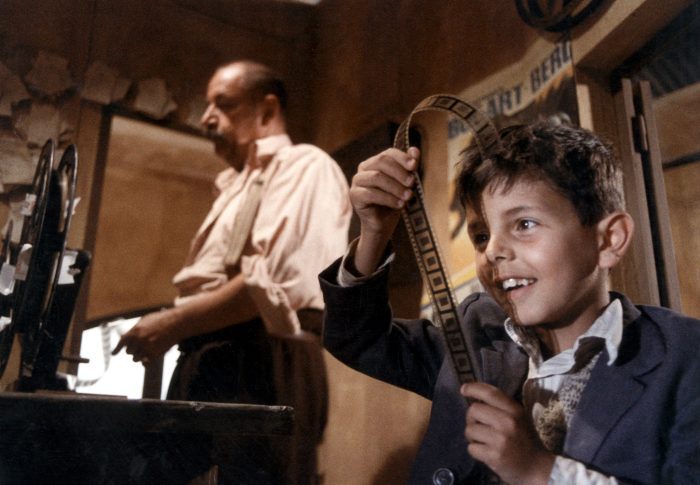
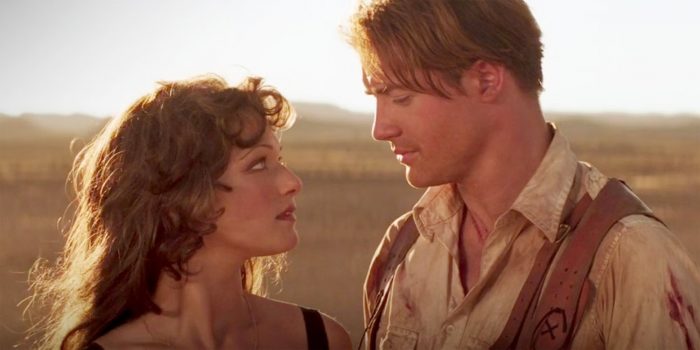


 Benner’s Farm, 56 Gnarled Hollow Road, East Setauket hosts a its last children’s workshop of the year, Gingerbread Houses Galore on the Farm, on Dec. 17 and 18 from 10 a.m. to noon. Mix in some gingerbread, some candy, some yummy icing, and some creativity, and this workshop is a hit! The program will consist of several gingerbread activities that incorporate the spirit of the farm during the holidays. Each child will go home with a gingerbread house as well as many other crafts. For ages 4 to 9. $40 per child. To register, call 689-8172 or visit www.bennersfarm.com.
Benner’s Farm, 56 Gnarled Hollow Road, East Setauket hosts a its last children’s workshop of the year, Gingerbread Houses Galore on the Farm, on Dec. 17 and 18 from 10 a.m. to noon. Mix in some gingerbread, some candy, some yummy icing, and some creativity, and this workshop is a hit! The program will consist of several gingerbread activities that incorporate the spirit of the farm during the holidays. Each child will go home with a gingerbread house as well as many other crafts. For ages 4 to 9. $40 per child. To register, call 689-8172 or visit www.bennersfarm.com.